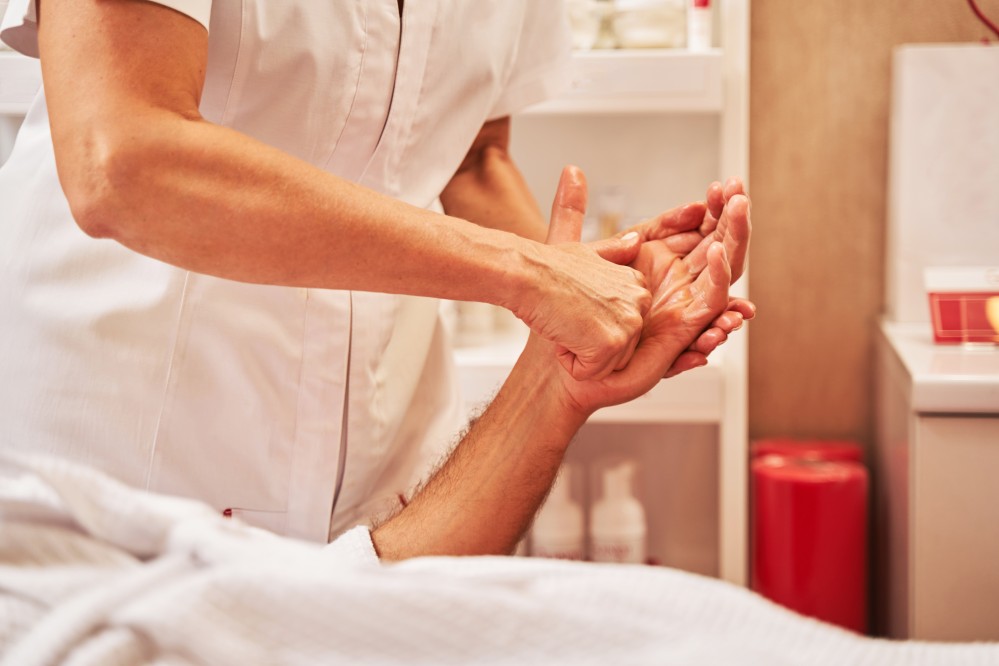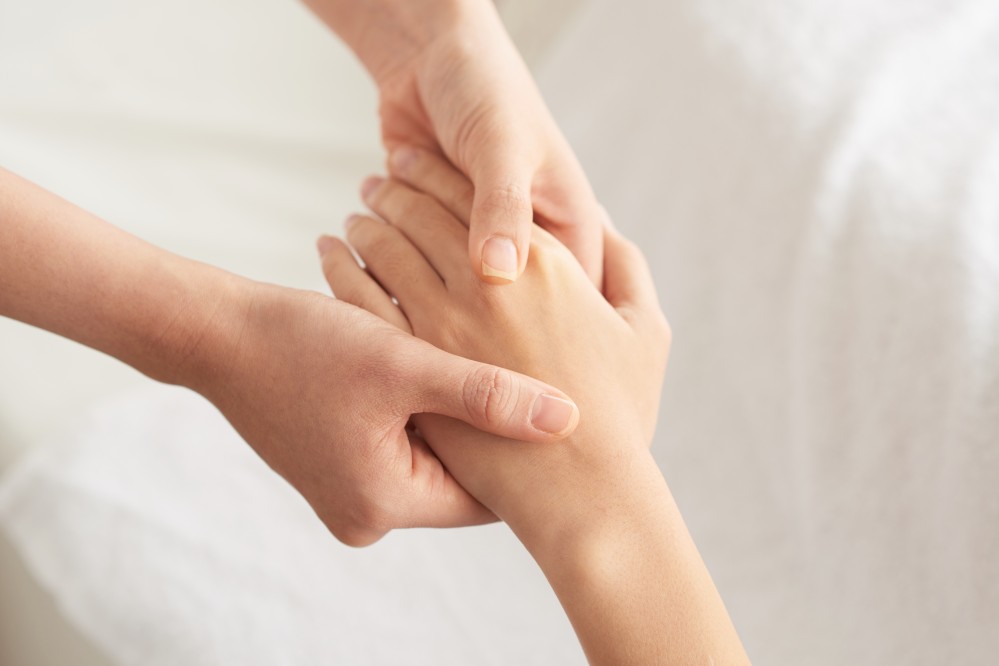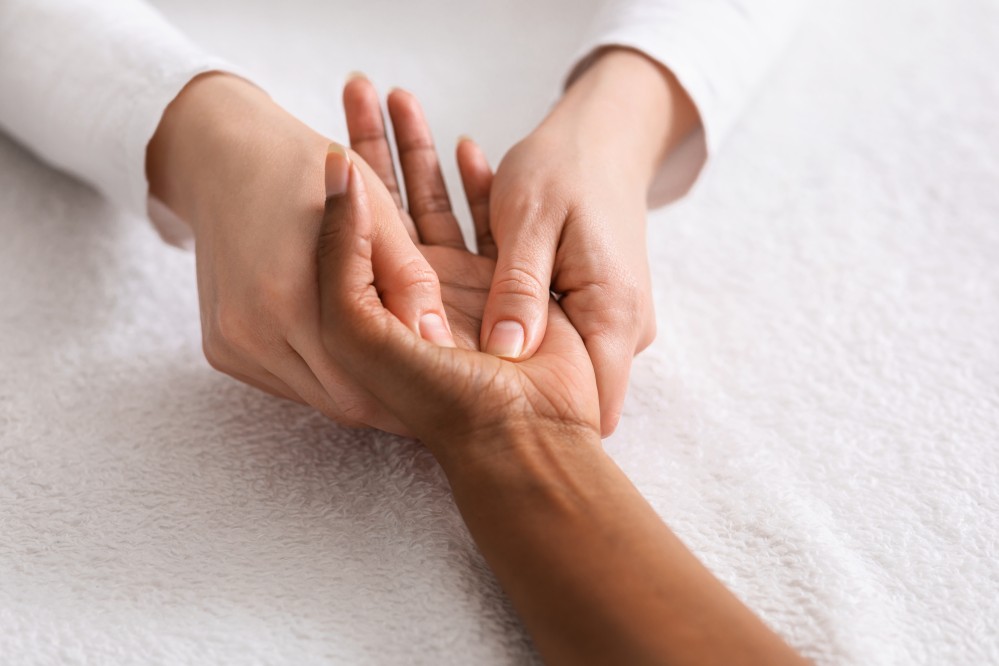Acupressure is an alternative medicine technique that has been used for thousands of years to alleviate pain. This ancient practice involves applying pressure to specific points on the body to release tension and promote healing.
In this article, we will dive into the fascinating world of acupressure and discover how various hand pressure points can improve your overall health and well-being. So get ready to take your health into your own hands and learn all about the power of hand pressure points!
What Is a Hand Pressure Point?
A hand pressure point refers to specific areas on the hand that, when pressed, stimulate particular nerve endings and activate energy pathways. According to Traditional Chinese Medicine, these points are linked to various organs and systems within the body. The stimulation of such points alleviates symptoms of multiple conditions such as headaches, neck pain, stress, and digestive issues.
What Are the Hand Pressure Points?

Hand pressure points are a form of alternative therapy utilized for centuries in traditional medicine practices such as acupuncture and acupressure. Some of the most well-known hand pressure points include the LI4, PC6, and HT7 points, each associated with specific health benefits and commonly used for pain relief, stress reduction, and improved circulation. Keep reading if you want to learn more about hand pressure points.
1. Lung Meridian
The Lung Meridian starts at a specific acupoint in the middle Jiao, known as Ren-12 Zhongmen Central Venter. From here, the energy flows downwards and links up with the large intestine. After that, it travels back up, passing along the opening of the stomach and then through the heart opening and the diaphragm before finally reaching the lungs.
In Traditional Chinese Medicine, the Lung Meridian is a vital component of the body’s energy system. It regulates the flow of Qi (life energy) throughout the body. It is crucial in maintaining an excellent respiratory and immune system and overall health and wellness.
Stimulating specific points along the Lung Meridian can help promote the flow of Qi, balance the body’s energy, and improve health and wellness.
2. Heart 7
Heart 7, also known as the Spirit Gate, is a hand pressure point on the palm side of the wrist. You can find it between the tendons that run from the little finger to the wrist. This point is associated with the heart and small intestine meridians.
Heart 7 treats various conditions, including insomnia, anxiety, depression, and other emotional imbalances. It is also believed to help regulate blood pressure, alleviate headaches, and relieve pain in the wrist and arm. This pressure point enhances circulation and improves overall energy levels.
3. Inner Gate Point
The Inner Gate Point, also known as Pericardium 6 (P6) or Neiguan, is a pressure point located on the inner forearm, approximately two finger widths above the wrist crease. It is one of the most commonly used pressure points in acupuncture and acupressure for treating various conditions. The Inner Gate Point directly affects the heart and its functions, as well as the digestive and immune systems.
4. Outer Gate Point

The Outer Gate Point, also known as Triple Warmer 5, is a hand pressure point commonly used in acupuncture and acupressure to treat various ailments and conditions. This point can be found on the outer side of the forearm. It mainly helps with headaches and migraines.
5. Hand Valley Point
The hand valley point is located between the index finger and the thumb. When applying pressure to this point, it is essential to use moderate force and hold the pressure for two to three minutes. It is a safe way to provide a quick and effective remedy for different conditions.
In addition to its use in Traditional Chinese Medicine, the Hand Valley Point is also commonly used in reflexology and massage therapy to help relieve stress and tension in the body.
6. The Base of Thumb Point
This one is a crucial acupressure point that helps improve respiratory function and alleviate breathing problems. It stimulates the Lung Meridian, which regulates the respiratory system. Applying gentle pressure to this point can help improve the flow of Qi throughout the body, which can help reduce symptoms of asthma, bronchitis, or other respiratory disorders.
Apart from respiratory problems, the base of the thumb point is also known to relieve headaches, anxiety, and stress.
7. Small Intestine 3
The Small Intestine 3 pressure point, also known as SI 3 in Traditional Chinese Medicine, is a commonly used acupressure point that can offer many health benefits. This point is located on the side of both hands, just below the pinkie finger.
Applying gentle pressure to this point can relieve pain and discomfort, including headaches, earaches, neck pain, and upper back pain.
8. Four Seams

This point is located on the back of the hand, between the thumb and index finger, where the tendons of the four fingers come together. In Traditional Chinese Medicine, this point is associated with the Lung Meridian, and stimulating it is believed to help regulate the flow of Qi throughout the body. Pressing this point can also help alleviate digestive issues, particularly in young children.
The Four Seams pressure point is often used in combination with other acupressure and acupuncture points to help address specific health concerns.
9. Ten Dispersions
The Ten Finger Pressure Points, as the name implies, are ten specific points found on the fingertips of each hand. These points are activated by applying pressure, which can help alleviate various symptoms associated with the flu, such as sore throat and high fever.
In addition to offering relief from flu symptoms, some reflexologists also believe that these points’ stimulation can positively affect conditions such as epilepsy and coma.
When and How to Use Hand Pressure Points?
Using hand pressure points can be seamlessly integrated into your daily routine, but understanding the best times and methods for applying this technique is essential for optimal results. Acupressure can be practiced as a preventive measure or a remedy for specific conditions.
Timing
Applying acupressure in the morning can help jumpstart your day by improving circulation and boosting energy levels, particularly if you experience morning stiffness or fatigue.
On the other hand, incorporating this practice before bedtime can promote relaxation and help you unwind after a long day, with points like Heart 7 and Inner Gate Point being especially beneficial for calming the mind and preparing the body for restful sleep.
Additionally, during stressful situations, applying pressure to certain hand points, like the Hand Valley Point or the Inner Gate Point, can help alleviate anxiety and provide immediate relief.
How to apply pressure
Before beginning, find a comfortable and relaxed position, whether sitting or lying down, whichever feels best. Use your thumb or index finger to locate the pressure point you intend to focus on. For example, if you’re targeting the Hand Valley Point, find the area between your thumb and index finger. Apply steady, gentle pressure using your thumb or fingers; the pressure should be firm but not painful.
If you experience discomfort, ease up slightly. Hold the pressure for about 1 to 3 minutes while taking deep, slow breaths to help release tension and stimulate the flow of Qi. This process can be repeated several times throughout the day or as needed for relief, with consistent practice enhancing the benefits and improving overall well-being.
Frequency
Incorporating acupressure into your daily routine can significantly contribute to general health maintenance and stress relief. Practicing it in the morning can energize your body, while an evening session can promote relaxation.
For acute conditions like headaches or digestive discomfort, applying pressure to the relevant points multiple times a day until symptoms improve can be effective. In cases of chronic conditions such as chronic pain or anxiety, regular acupressure sessions over several weeks or months may provide more sustained relief.
While acupressure is a safe and natural method for promoting health, it’s important to consult with a healthcare professional if you have any underlying medical conditions or if symptoms persist.
The Bottom Line
Hand pressure points play a crucial role in enhancing our overall health and wellness. They are a natural remedy for various physical and emotional afflictions, providing relief from pain and stress, promoting better circulation, and strengthening the immune system.
By gaining an understanding of the various pressure points in the hands and their functions, individuals can take control of their physical, mental, and emotional well-being and live a more balanced life.
Regularly incorporating hand pressure point therapy into your self-care routine can promote healing and significantly improve your quality of life.
Frequently Asked Questions (FAQs):
Can anyone practice acupressure on themselves, or is it necessary to see a professional?
Yes, acupressure is a technique that most people can practice on themselves. It is a safe and non-invasive method of self-care that you can do it at home without any special equipment. However, if you are new to acupressure or dealing with a specific health condition, consulting with a trained professional may help you learn the proper techniques and identify the most effective pressure points for your needs.
Are there any side effects or risks associated with using hand pressure points?
Acupressure is generally safe, with minimal risks or side effects when you perform it correctly. However, applying too much pressure or pressing on the wrong points can cause temporary soreness or bruising.
How quickly can you expect results from using hand pressure points?
The effects of acupressure can vary depending on the individual and the condition. Some people may experience immediate relief after just one session, especially for issues like tension headaches or stress. Consistency is key to experiencing the full benefits of acupressure.
Can you combine acupressure with other forms of treatment?
Yes, you can use acupressure alongside other treatments, such as conventional medicine, physical therapy, or alternative therapies like acupuncture and massage.
However, it’s important to inform your healthcare provider about your acupressure practice, especially if you are receiving treatment for a specific medical condition, to ensure it complements your overall treatment plan safely.